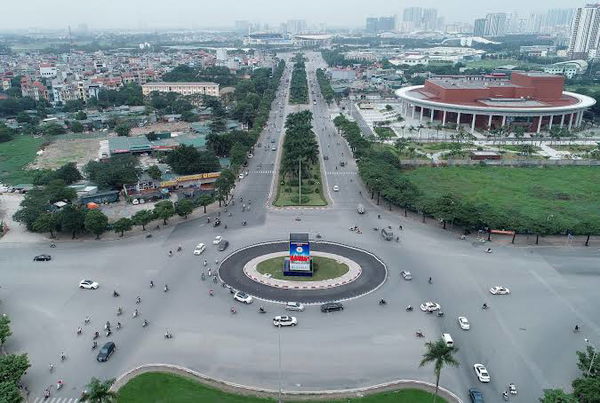

Amid the hype surrounding the return of Zandvoort in 2020, it is easy to forget that another new addition to the calendar. Ahead of the maiden Vietnam Grand Prix, construction of the Hanoi street circuit is well underway and making steady progress.
Track Layout – Vietnam Grand Prix
The capital city of Hanoi will play host to the third round of the 2020 Formula 1 world championship. In addition to that, it will be the fourth full-fledged street circuit on the calendar. After some initial reservations, the circuit had an additional corner added in an effort to improve safety.
ADVERTISEMENT
Article continues below this ad
Other changes include those done to the original Turns 21 and 22, increasing the lap distance from 3.458 to 3.484 miles. The circuit design company Tilke designed the layout to resemble a flying crane.

Date of the Vietnam Grand Prix and where to buy race tickets
You can buy Vietnam Grand Prix race tickets on the official Formula One website. Tickets are available for the main race day on 5th April 2020 as well as combo packages for the Friday and Saturday leading up to the main race.
Race promoters are still working on the building the track, aiming to finish it with a January 2020 deadline.
What are the unique features of the Hanoi Street Circuit?
The Hanoi Street Circuit features several corners inspired by historic circuits Suzuka and the Nürburgring. It will feature one of the longest straights on the calendar, topping out at 1.5km.
The Nürburgring track heavily inspires the opening of the Hanoi Street Circuit. It features as one of the key areas for overtaking at the Vietnam Grand Prix.
Turns 12 to 15 resemble the Massenet section and climb up the hill at Monaco.
Corners 16 to 19 resemble the Esses at Suzuka. After these corners comes a purpose-built section where the track will curve back on itself. The lap ends in a tight 90-degree corner.
ADVERTISEMENT
Article continues below this ad
The circuit is expected to combine the need for mechanical grip in the slower sections that follow out of the tight hairpins with great cornering speeds, virtue of the sweeping bends and long straights that dominate the layout.
The pit lane entry (ahead of Turn 22) and exit have also been designed with minimizing the total pit stop time in mind in efforts to make multiple stop strategies move viable to teams.
ADVERTISEMENT
Article continues below this ad

ADVERTISEMENT
ADVERTISEMENT
ADVERTISEMENT
ADVERTISEMENT

